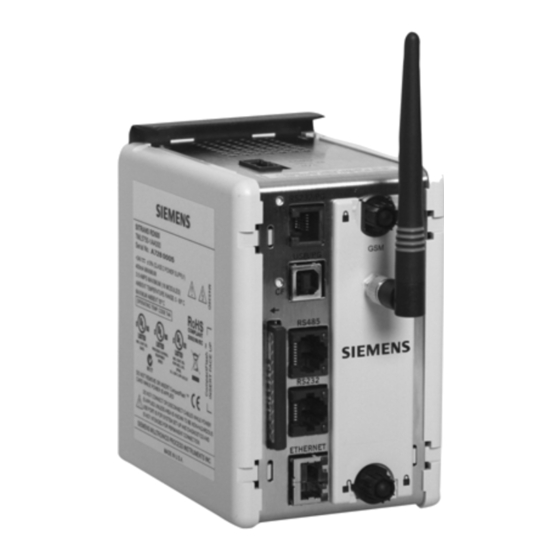Siemens SITRANS RD500 사용 설명서 - 페이지 32
{카테고리_이름} Siemens SITRANS RD500에 대한 사용 설명서을 온라인으로 검색하거나 PDF를 다운로드하세요. Siemens SITRANS RD500 48 페이지. Configuring sitrans rd500 for connection to multiranger with modbus rtu
Siemens SITRANS RD500에 대해서도 마찬가지입니다: 사용 설명서 (8 페이지), 사용 설명서 (8 페이지), 사용 설명서 (8 페이지), 애플리케이션 매뉴얼 (6 페이지), 매뉴얼 (11 페이지), 적용 사례 (9 페이지)

Data Log Configuration
The RD500 can record any of the I/O values to CompactFlash (CF) for later review. Data
recorded is stored in industry-standard comma separated variable (CSV) files, making it
compatible with virtually any external application.
When using the RD500, we recommend installing a supported CF card for
Note:
best results when datalogging and other key features. A 1 GB CF card is included
with the SITRANS RD500 and an optional 2GB card is available for order.
From the Overview page, click Configure and then Logs to create and edit the logging
facility.
If the CF card LED is not ON, the card is probably not available and you will
Note:
be unable to create or access log files. If this happens, do the following:
•
Power down the RD500.
•
Remove the CF card and re-insert it, ensuring that it is seated correctly. (For
more details, refer to the SITRANS RD500 Hardware Operating Instructions.)
•
Turn power back on. The LED should now be ON and your log files available
from the log screen.
To create new log:
Click Configure, and then Logs. Enter a log name in the next available box, and then
choose the Interval, Samples, and Max files. Click Apply.
To delete log: Ensure the Log checkbox is checked. Then delete the log Name and click
Apply.
•
The Log property is used to enable and disable log files.
•
The Name property allows a descriptive name to be applied to the folder in which
this log's data will be stored (limited to 8 characters).
•
The Interval property is used to indicate how often this log takes a sample of data.
All of the I/O assigned to this log will be sampled at the same rate.
Page 30
SITRANS RD500 – OPERATING INSTRUCTIONS
7ML19985MA01
